Here is the way I did cheap shore power. My cord is a 50 foot #10 wire 15 amp extension cord from Home Depot/Lowes, which has a neon light at the female end. I have a series of adopters for 20, 30 and 50 amps male to 15 amp female, so I can use any marina power.
The inlet is a "battery charger inlet" for the 15 amp cord. This is under the gunnel, just below the hole which the 12 volt wiring, engine harness and cables go to the battery and outbaord. It is easy to zip tie the power cord to the cables above it to provide security for the cord.
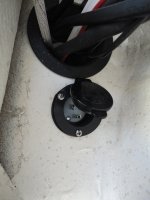
Inside the boat the Marine quality,vinyl covered, triplex stranded #12 wire goes to a plastic 4" x 4" junction box. On the right side of this box, is a box which has a screw type of fuse (15 amp), (under the metal cover) and a single pole switch below, which is on the "Hot" side of the circuit. This is before the fuse, so when the switch is "off" there is no power to the fuse and all of the circuit down the line.
There is a 15 amp GFI plug for the battery charger (I have replaced the Guest 10 amp with a Master volt 20 amp charger and put a GFI plug here,) daisy chained to the other 2 plugs.
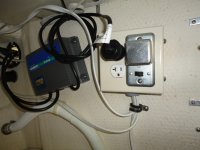
There are two plugs--one behind the helm seat:
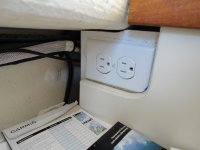
The other is under the aft dinette seat:
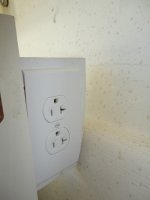
Each of these plugs are placed on a plywood block, and the back of the plug covered with a plastic outlet box:
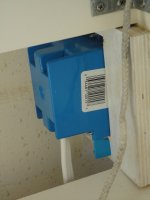
The costs: Cord at Home Depot: $15. Battery charger inlet: $26, Marine grade, vinyl covered #12 triplex wire: 22 feet @ $1. 50 a foot = $33. 4" x 4" x2" Plastic box: $4.50 1 GFI plug: $13, 2 non GFI plugs: $8, plastic box for back of 15 amp plug, $1.00. Combination motor start Switch and fuse socket for 15 amps: $10. Spare fuses: $10. Plywood, paint, ring terminals (all of the connections are to screw terminals with swaged on ring connectors--NO Scotch lock or wire twist terminals.) covers etc in my spares box--about $2.00. Total cost: Approximately $122.50
What does this give you over the extension cord? A secure and permant plug, which is out of weather for the inlet. 3 GFI plugs, in 3 areas of the boat. An on and off switch. All wiring secured and not in a place where you can trip on it, or where it can get into the bilge.





